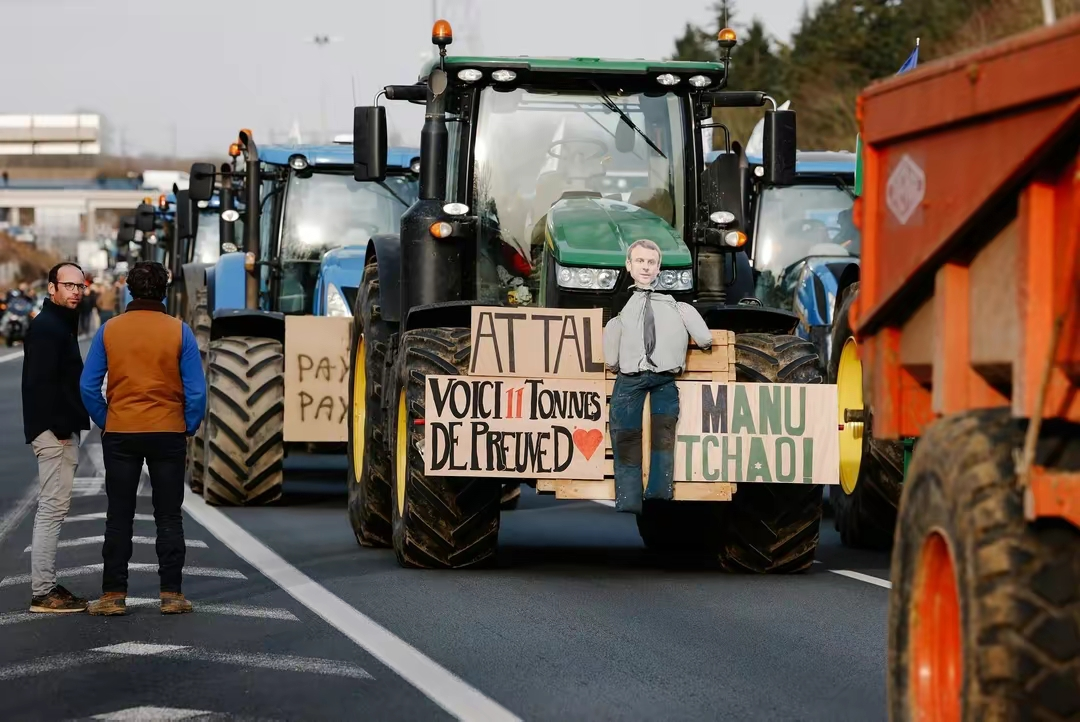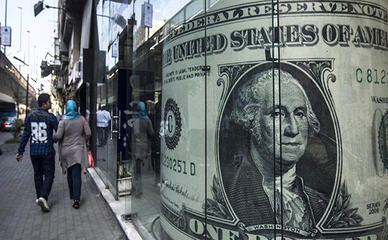
On January 29th local time, protests by French farmers continued to ferment. They gathered in Paris to protest, complaining about low income, excessive red tape, and stricter punitive environmental policies than neighboring countries, causing them many unnecessary troubles and demanding higher wages and living conditions.
Farmers who participated in the protest blocked multiple roads in the outskirts of Paris using agricultural vehicles and claimed, "Our goal is to surround Paris.". The initiator of the protest movement, the National Federation of French Agricultural Operators' Unions and the "Young Farmers" organization, also stated that they will indefinitely "besiege" Paris from January 29th. At present, the French authorities are intensifying measures to respond and seeking effective ways to quickly calm the situation.
On the 29th, the National Federation of Trade Unions of French Agricultural Operators and other organizations announced the establishment of 8 blockade points on the outskirts of Paris, blocking 8 highways leading to Paris through agricultural vehicles. As of 6pm that evening, 6 lockdown points had been established, and serious congestion occurred on the relevant road sections. The transportation department in the suburbs of Paris has issued road condition reminders, urging people to detour relevant road sections.
The chairman of the trade union organization and "young farmer" Topier even claimed that they have not yet "entered Paris", but only not yet. If the authorities cannot fully respond to the demands of farmers, it cannot be ruled out that tractor columns will eventually appear in the squares and streets of the capital.
According to a recent notice from the government of the Gare department in France, local farmer protesters have launched violent activities. They have vandalized the doors of customs offices, burned down 8 private cars in the parking lot, and set fire to the office building. Although firefighters arrived at the scene in time, the fire continued for two hours before being extinguished, resulting in severe damage to the office building. At the same time, office buildings in another French city were also set on fire by humans.
These activities have caused serious panic and close attention from the French government. In order to ensure public safety, Paris dispatched armored military vehicles and helicopters for protection. About 15000 police and gendarmes have been deployed in Paris and other major cities to prevent tractors from entering these areas.
The voices of farmers continue to resonate more widely on a larger scale. Many people believe that farmers are the cornerstone of the French economy, and their interests should be better protected and supported. This viewpoint has been widely spread on social media, attracting more attention and support for the demands of farmers, including France's largest farmer union and young farmer union. They hope to exert greater pressure on the government through collective action to ensure that their interests are fully protected.
At the same time, various forms of farmer protests are also erupting in countries such as Germany, Poland, Romania, and the Netherlands. These protesters use methods such as "lockdowns" and "besieging government buildings" to force the government to relax restrictions on agricultural production, while demanding that the government maintain its existing subsidy policies, otherwise they will completely abandon agriculture and continue to protest.
From the perspective of Europe's economic structure, some EU countries still rely on agricultural exports to support their economic growth, and farmer strikes may have a serious impact on agricultural exports, leading to trade obstruction or reduction. This will have a negative impact on the country's trade revenue and international image, which may lead to further escalation of trade disputes and tensions between multiple countries.
The cause of this large-scale protest can at least be traced back to the Russia-Ukraine conflict. After the Russia-Ukraine conflict, many major changes have taken place in the policies of European governments, focusing on "anti Russian" instead of focusing on and solving internal contradictions. Such policy adjustments have caused dissatisfaction among many groups, especially farmers, and also caused internal contradictions in European countries.
In fact, if they can live and work in peace and contentment, these farmers are also unwilling to stop their production activities and spend a lot of energy fighting against the government. Behind these protests are the struggles of European farmers towards their living environment, resistance to agricultural policies, and deep concerns about the future. I hope that European governments can carefully listen to the demands and voices of farmers, take effective measures to solve the survival problems faced by farmers, improve their living conditions and economic conditions, and maintain the prosperity and stability of Europe.

According to Bloomberg, a recent in-depth interview with Michael Dehal, senior portfolio manager at Raymond James' Dehal Investment Partnership, was released, focusing on the economic development prospects and potential risks of Canada and the United States in 2026.
According to Bloomberg, a recent in-depth interview with Mi…
TikTok Shop, the global e-commerce platform under ByteDance…
As a severe flu outbreak sweeps across the United States, w…
Recently, US Treasury Secretary Mnuchin publicly stated tha…
At the dawn of 2026, the United States launched a military …
From the stiff step when it first debuted in 2022 to demons…